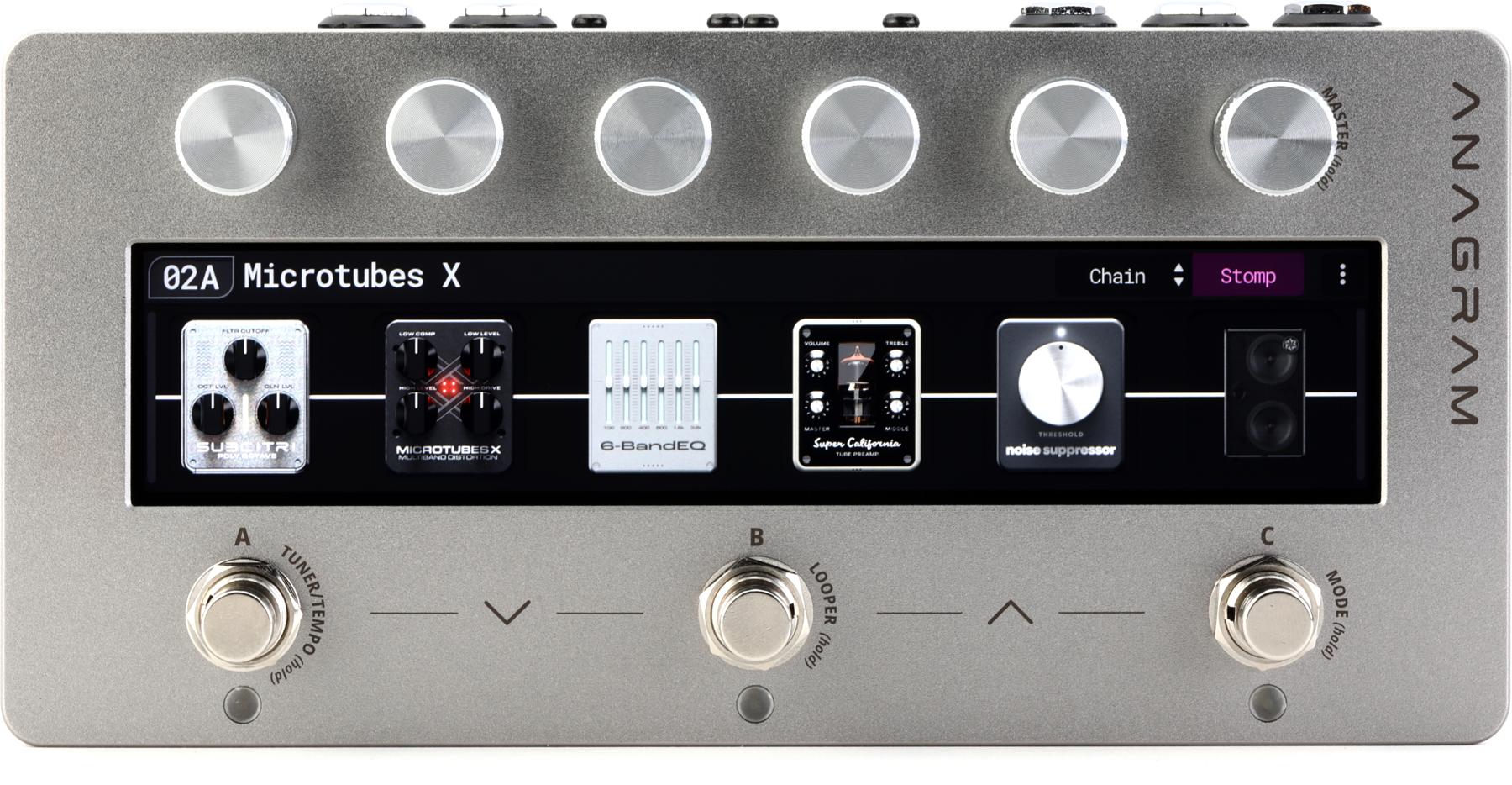I love guitar chaos, from the expressionist sound-painting of Jimi Hendrix’s “Machine Gun” to the clean, clever skronk ’n’ melody of Derek Bailey to the slide guitar fantasias of Sonny Sharrock to the dark, molten eruptions of Sunn O))). When I was just getting a grip on guitar, my friends and I would spend eight-hour days exploring feedback and twisted riffage, to see what we might learn about pushing guitar tones past the conventional.
So, pedals that are Pandora’s boxes of weirdness appeal to me. My two current favorites are my Mantic Flex Pro, a series of filter controls linked to a low-frequency oscillator, and my Pigtronix Mothership 2, a stompbox analog synth. But the Time Shadows II Subharmonic Multi-Delay Resonator is threatening their favored status—or at least demanding a third chair. This collaboration between Death By Audio and EarthQuaker Devices is a wonderful, gnarly little box of noise and fun that—unlike the two pedals I just mentioned—is easy to dial in and adjust on the fly, creating appealing and odd sounds at every turn.
Behind the Wall of Sound
Unlike the Mantic Flex Pro, the Time Shadows is consistent. You can plug the Mantic into the same rig, and that rig into the same outlet, every day, and there are going to be slight—or big—differences in the sound. Those differences are even less predictable on different stages and in different rooms. The Time Shadows, besides its operating consistency, has six user-programmable presets. They write with a single touch of the button in the center of the device’s tough, aluminum 4 3/4" x 2 1/2" x 2 1/4" shell. Inside that shell live ghosts, wind, and unicorns that blow raspberries on cue and more or less on key. EQD and DBA explain these “presences” differently, relating that the Time Shadow’s circuitry combines three delay voices (EQD, II, and DBA) with filters, fuzz, phasing, shimmer, swell, and subharmonics. There’s also an input for an expression pedal, which is great for making the Time Shadows’ more radical sounds voice-like and lending dynamic control. But sustaining a tone sweeping the time, span, and filter dials manually is rewarding on its own, producing a Strickfaden lab’s worth of swirling, sweeping, and dipping sounds.
Guitar Tone from Roswell
Because of the wide variety of sounds, swirls, and shimmers the Time Shadows produces, I found it best to play through a pair of combos in stereo, so the full range of, say, high notes cascading downwards and dropping pitch as they repeat, could be appreciated in their full dimensionality. (That happens in DBA mode, with the time and span at 10 and 4 o’clock respectively, with the filter also at 4, and it’s magical.) The pedal also stands up well to fuzz and overdrives whether paired with humbucker, P-90, or single-coil guitars.
I loved all three modes, but the more radical EQD and DBA positions are especially excellent. The EQD side piles dirt on the incoming signal, adds sub-octave shimmer, and is delayed just before hitting the filters. Keeping the filter function low lends alligator growls to sustained barre chords, and single notes transform into orchestral strings or brass turf, with a soft attack. Pushing the span dial high creates kaleidoscopes of sound. The Death By Audio mode really hones in on the pedal’s delay characteristics, creating crisp repeats and clean sounds with a little less midrange in the filtering, but lending the ability to cut through a mix at volume. The II mode is comparatively clean, and the filter control becomes a mix dial for the delayed signal.
The Verdict
The closest delay I’ve found comparable to the Time Shadows is Red Panda’s function-rich Particle 2 granular delay and pitch-shifter, which also uses filtering, among other tricks. But that pedal has a very deep menu of functions, with a larger learning curve. If you like to expect the unexpected, and you want it now, the Time Shadows supports crafting a wide variety of cool, surprising sounds fast. And that’s fun. The challenge will be working the Time Shadows’ cascading aural whirlpools and dinosaur choirs into song arrangements, but I heard how the pedal could be used to create unique, wonderful pads or bellicose solos after just a few minutes of playing. If you’d like to easily sidestep the ordinary, you might find spelunking the Time Shadows’ cavernous possibilities worthwhile.




















